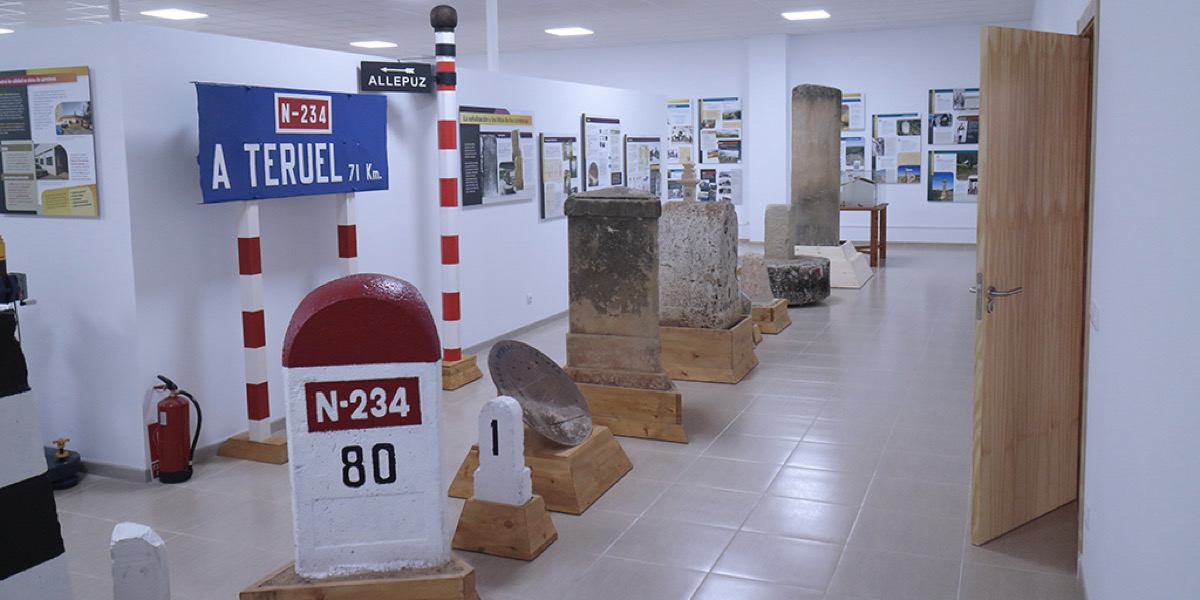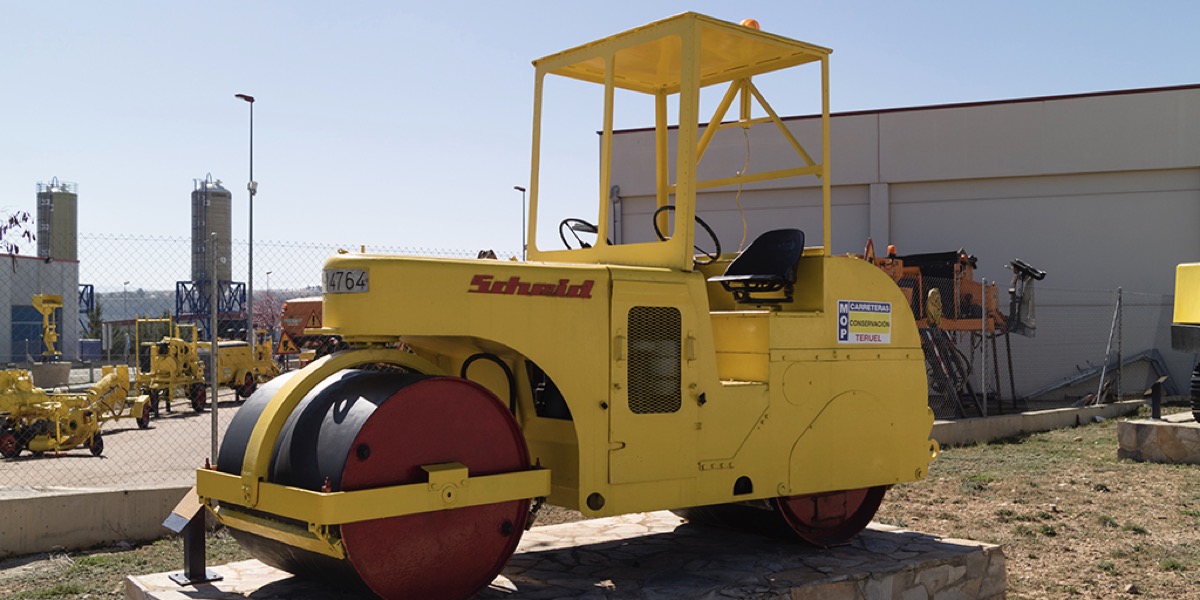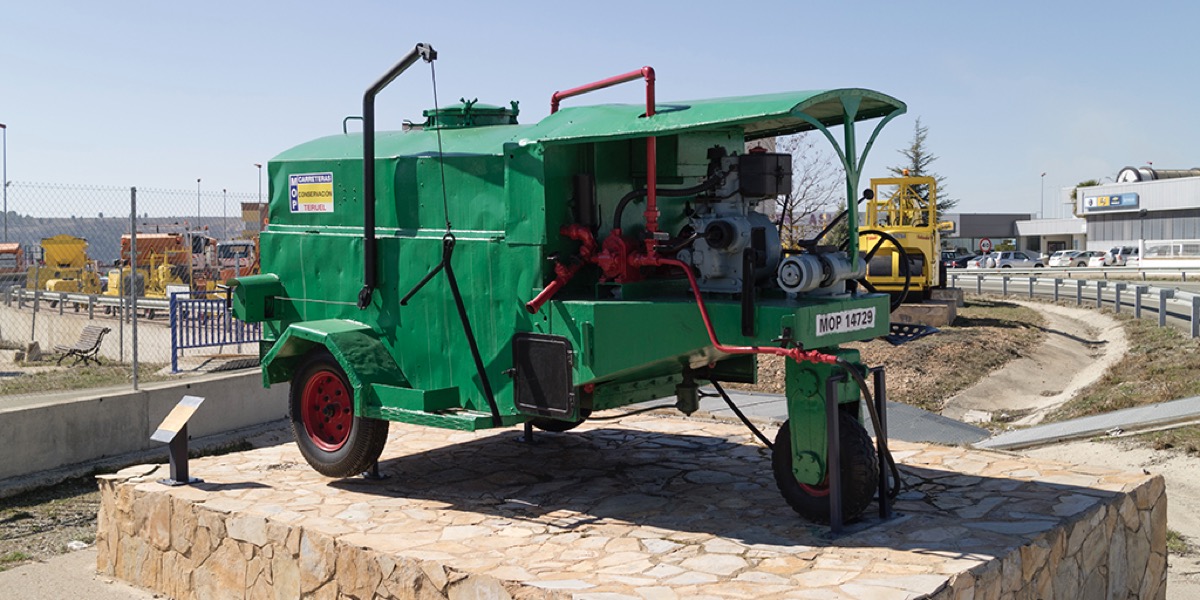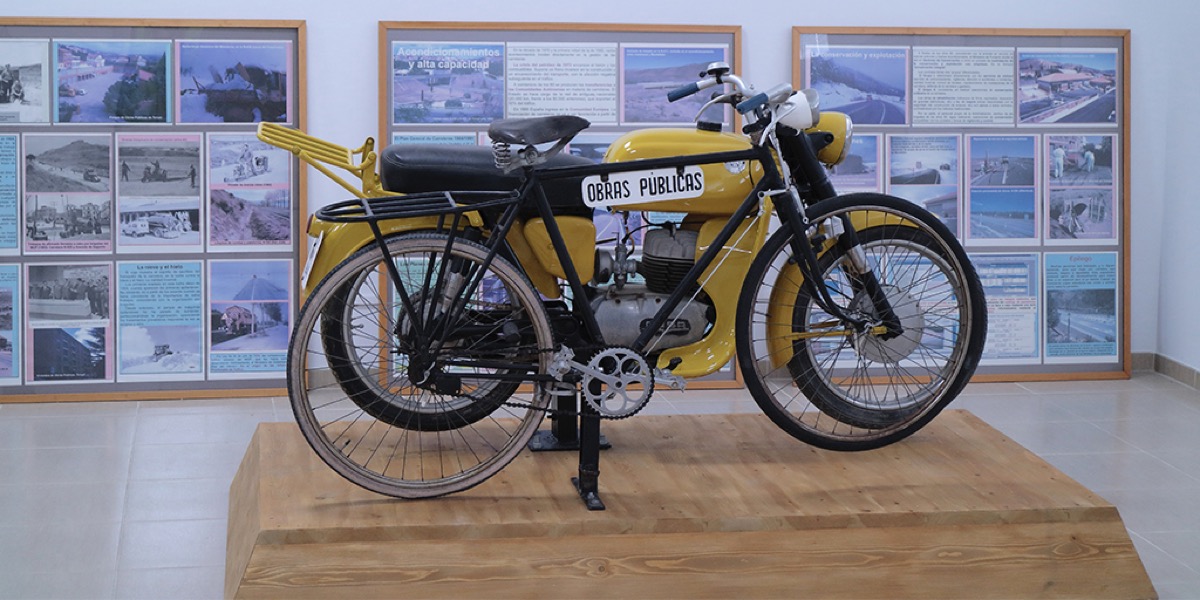We use cookies and other proprietary and third-party technologies to make our website work correctly and securely. We also use them to analyse user browsing and be able to adapt advertising to your tastes and preferences. Cookies Policy.
We drive on them, they connect our cities and countries, and they even lend their name to a cinematic genre, the road movies. We’re talking about highways and motorways, which are the subject of an unusual classroom course and museum: the Museo de Carreteras in Teruel.
To visit it, you have to travel to the Centro de Conservación de Carreteras (or Highway Conservation Center, part of the Ministry of Development) located in the Los Hostales industrial park, on the Celadas highway. The exhibit has four areas: a classroom and small laboratory; a technical library; the museum itself; an outdoor collection of 37 vehicles used to build and maintain roads and highways. Here are machines like the backhoe excavator, the snowplow and the packer roller, but also a sampling of safety barriers, kilometer markers and other signs that show how they evolved over the years.

The classroom and laboratory were opened in 2006. Their aim was to explain the conservation and creation of these roads, and they thought the most appropriate way was the begin with the children. In visits to the classroom –which must be previously scheduled, like visits to the technical library– the kids learn how a road is built and conserved. This learning is done through games, most of them created by the workers at Highway Conservation Center, and include a dioptra (a device used by topographers in Antiquity) and a chorobates, used by Romans to measure horizontal planes; both are built of wood and on a scale that is accessible for the children.
But it wasn’t until 2017 that the Highway Museum itself was created, which presents materials and objects brought together by the Highway Unit of Teruel and donations from other organizations and private citizens. The exhibition has 13 sections that present the history of Spain’s roads, using the province of Teruel as an example.

Unidad de Carreteras de Teruel
With the title Camineros, de la senda a la autovía (Roadbuilders, From the Track to the Motorway) this is a voyage through time from the construction of the Roman roads to the great motorways of today: what travel was like, who were the builders and how they lived while constructing these roads with pick and shovel, the construction of bridges, how quality control was applied to these roadworks and by way of what machinery, and other aspects engineering, topography and planning. There’s even the reproduction of an engineer’s office, with all the topographical devices, plans and templates they used to carry out their projects. And visitors can round out the experience by travelling to Luco de Jiloca to inspect one of the houses where the construction and repair men lived. This way it’s possible to understand just how hard their work was, with many of them tied down to a single stretch of road.
For the moment, the museum is closed because of the Covid-19 confinement, but when the situation allows it will reopen its doors to the public on Saturdays from 10.30 to 13.30 hours.

Unidad de Carreteras de Teruel

Unidad de Carreteras de Teruel
Notice: Trying to access array offset on value of type null in /DATA/sites/ontheroadtrends.com.preproduccion.com/webspace/wp-content/themes/ontheroad2023/templates/newsletter.php on line 3
Notice: Trying to access array offset on value of type null in /DATA/sites/ontheroadtrends.com.preproduccion.com/webspace/wp-content/themes/ontheroad2023/templates/newsletter.php on line 4
Notice: Trying to access array offset on value of type null in /DATA/sites/ontheroadtrends.com.preproduccion.com/webspace/wp-content/themes/ontheroad2023/templates/newsletter.php on line 5